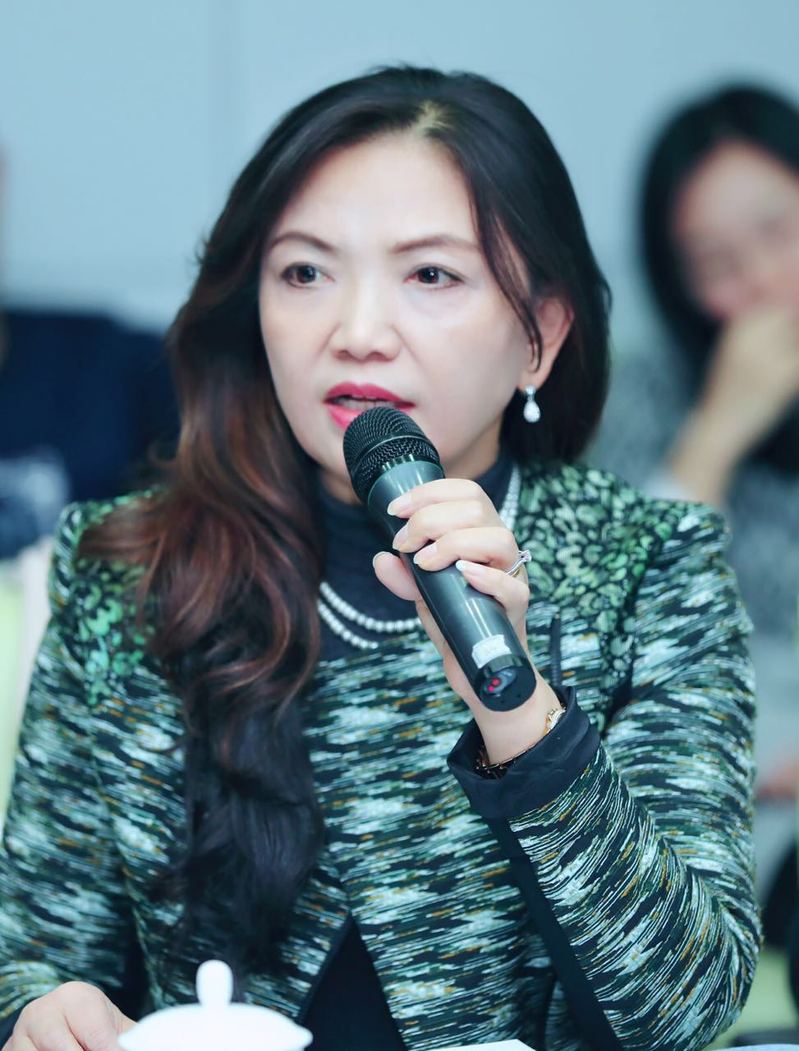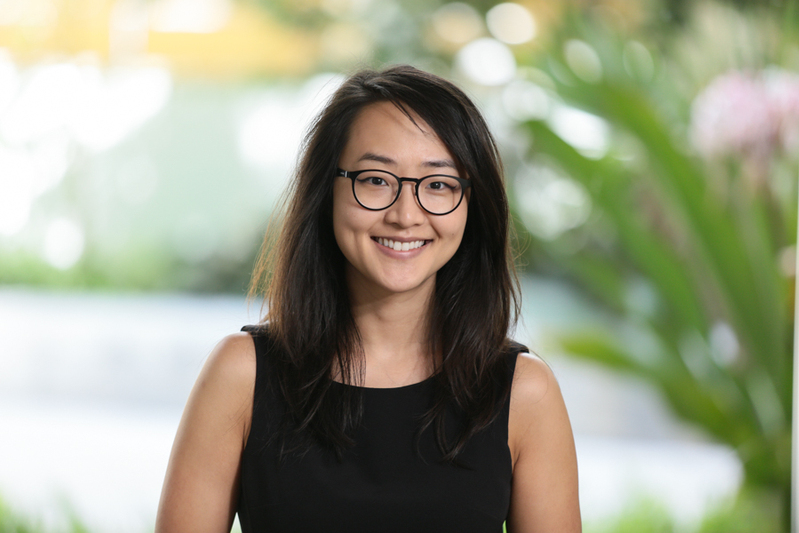论坛时间:2017/6/14
论坛地点:浙江大学紫金港校区南华园2号楼
论坛主持:周欣悦教授,浙江大学管理学院市场营销学系主任
主办单位:浙江大学管理学院市场营销学系
论坛流程:
8:30-8:45 开场讲话
8:45-9:30 Hannah.H.Chang—The Impact of Power on Reliance on Feelings in Decision Making
9:35-10:15 Xinyue Zhou—Inspiring Awe in Consumers
10:15-10:30 茶歇
10:30-11:15 Leilei Gao—When Small Predicts Large: The Effect of Initial Small Contributions
on Subsequent Contributions to a Crowdfunding Project
11:20-12:00 Yan Zhang—Hiding Gifts behind the Veil of Vouchers: The Effect of Gift Vouchers
in Conditional Promotions
12:00-13:30 午休
13:30-14:30 特聘教授王青聘任仪式
14:30-15:10 Qing Wang—The Effect of the Level of Construal on Consumer Evaluation of Luxury
Brands: a Processing Fluency Perspertive
15:15-15:45 Lili Wang—Will Saying Thank You(vs.Sorry)Lead to Higher Consumer Satisfaction?:
Comparing Two Strategies for Symbolic Service
15:45-16:00 茶歇
16:00-16:40 Zoey Chen—Social Acceptance and Word of Mouth: How the Motive to Belong leads
to Divergent WOM with Strangers and Friends
16:45-17:15 Tao Liu—The Social Attribute of Consumer Behavior: Studies from the Perspective
of Inter-Brain Network
论坛嘉宾:
1、Hannah H. Chang

Associate Professor of Marketing,Lee Kong Chian School of Business,Singapore Management University (SMU)
The Impact of Power on Reliance on Feelings in Decision Making
Results across six experiments support the hypothesis that states of high (vs. low) power increase consumers’ relative reliance on feelings in making decisions. Specifically, we find that consumers in states of high (vs. low) power are more likely to prefer affectively (vs. cognitively) superior option (experiments 1 and 2) and rely more on incidental moods in product evaluations (experiment 3). We further demonstrate that enhanced confidence evoked by high (vs. low) power underlies the observed effect (experiment 4). Further, valuation of the decision outcome increases when high-power (low-power) consumers adopt a feeling-based (reason-based) decision strategy (experiment 5). Finally, compared to consumers in the state of low power, consumers experiencing high power are more likely to exhibit a characteristic typically attributed to affect, known as scope insensitivity (experiment 6). Theoretical implications and managerial implications are discussed.
2、 Xinyue Zhou

Professor of Marketing,School of Management,Zhejiang University
Inspiring Awe in Consumers
At one time or another, people are struck by glorious sunsets, great works of art, intellectual epiphany, the beauties of nature, the perceived experience of the divine. This intense emotional response elicited by the vastness of the surrounding world may best be labeled as “awe”. People often describe that experiencing awe gives them a sense of perspective on their life and making them see the world in a new light. This talk presents three separate lines of research on the downstream consequences of awe for consumers.
3、Leilei Gao

Associate Professor of Marketing,Chinese University of Hong Kong
When Small Predicts Large: The Effect of Initial Small Contributions on Subsequent Contributions to a Crowdfunding Project
Crowdfunding is becoming an increasingly popular means for entrepreneurs to raise capital through online platforms. When deciding whether to support a project, a potential backer evaluates the project not only based on information provided by the entrepreneur, but also based on the amount already invested in the project.Some research has suggested that larger contributions are likely to create donation momentum and elicit backers’ herding behavior (Agrawal, Catalini, and Goldfarb 2015). Accordingly, it is common for entrepreneurs to ask their friends or families to “seed” investmentsin the early stages of a crowdfunding project. But does this “friendship-giving” practice really benefit crowdfunding projects? Large-scale field data and lab experiments show that, contrary to this common practice, a large amount of initial contribution at the early stage of a crowdfunding project may impede rather than benefit the project. Instead, small initial contributions are more likely to attract following backers to contribute to the project. We suggest that this is because a potential backer will infer other backers’ behavioral intentions based on the amount they contributed to the project, which in turn determines the potential backer’s likelihood of following others.
4、Yan Zhang

Assistant Professor of Marketing,NUS Business School
Hiding Gifts behind the Veil of Vouchers:The Effect of Gift Vouchers in Conditional Promotions
To boost sales, companies often conduct promotions in which merchants offer a giftconditional on the purchase of a focal product. Customers can either receive the gift directly or receive a voucher entitling them to the gift. This article examines whether using a gift voucher influences consumers’ intentions to purchase the focal product.
We suggest that a voucher serves as a decoupling device that breaks the direct association between the focal product and the gift, reducing people’s tendency to compare the gift value with the focal product price. Consequently, presenting a voucher, as compared to presenting a gift directly, decreases purchase intention for promotions that offer high-value gifts but increases purchase intention for promotions that offer low-value gifts. Across six experiments, we find evidence consistent with this prediction. Moreover, we find that the effect of vouchers is less pronounced among consumers who have purchased similar products in the past. Although vouchers have no inherent economic value in themselves, they significantly influence consumers’ purchase decisions.
5、Qing Wang

Professor of Marketing and Innovation,Simone Griesser and Thomas Hills,University of Warwick
The Effect of the Level of Construal on Consumer Evaluation of Luxury Brands: a Processing Fluency Perspective
According to construal level theory (CLT), consumers perceive psychologically distal stimuli as being more abstract. Luxury brands are exclusive, hedonic, desirable, and consumed less frequently than everyday functional brands
In Study 2, the abstractness in advertising stimuliand the effect on brand evaluationare further investigated using a 2 (concrete vs abstract stimuli) by 2 (luxury vs functional brand) by 2 (brand logo presence vs absence) within subjects design with 37 Undergraduates from a British university. Presenting participants an abstractly (concretely) worded advertisement with the CHANEL (Primark) logo represents the match condition. Showing participants an abstractly (concretely) worded advertisement with the Primark (CHANEL) logo represents the mismatch condition. A repeated Multivariate Analysis of Variance revealed significant differences between level of concreteness and luxury vs. functional brand on brand evaluation. In Study 3 based on previous studies on processing fluency, a 2 (high vs.lowconstrual) x 2 (concrete vs. abstract advertising stimuli) within subject design and the effect on processing fluency are examined. The level of construal are manipulated by priming thr subjects to think about going shopping tomorrow (concrete) or in three months (abstract)
6、Lili Wang

Associate Professor of Marketing,School of Management,Zhejiang University
Will Saying Thank You (vs. Sorry) Lead to Higher Consumer Satisfaction?:Comparing Two Strategies for Symbolic Service Recovery
Service delay is ubiquitous in service marketing.Across both industry and academia, apologies are highly recommended for addressing service delays. In this paper, we present evidence for another viable strategy: appreciation. Focusing on service delay contexts, we explain why and when appreciation works better than apology. Specifically, we propose that appreciation which emphasizes the customers’ merits (vs. apology which focuses on marketers’ shortcomings) boosts consumers’ self-regard, which in turn leads to higher customer satisfaction after a service delay. The effect was tested by directly measuring self-regard, manipulating the meaning of appreciation (removing self-regard from appreciation), and exploring the moderating role of consumer narcissism. Furthermore, we examine boundary conditions for the above effects and provide managerial implications for marketers by exploring the role of the magnitude/severity of service delay and locus of responsibility.
7、Zoey Chen

Assistant Professor of Marketing,University of Miami
Social Acceptance and Word of Mouth: How the Motive to Belong leads to Divergent WOM with Strangers and Friends
Consumers are increasingly sharing product experiences with strangers and friends online. Despite the prevalence of word of mouth (WOM), little is known about how and why WOM differs based on whether people are talking to strangers or friends. The current paper theorizes that one important motivation for WOM is social acceptance. To fulfill this motivation, people form and maintain existing relationships with others. Building on research in interpersonal relationships, we theorize that when communicating with strangers, people attempt to self-enhance to attract strangers into forming relationships with the self; when sharing with friends, on the other hand, people attempt to connect emotionally in order to maintain existing ties. A series of seven studies provide backing for this simple yet encompassing framework. Results of the current paper provide insights into the motivations behind WOM, synthesize prior findings and show that people systematically share different content with strangers versus friends. The current paper makes theoretical contributions to research in interpersonal communication, social influence and WOM, and holds practical implications for marketers interested in understanding consumer word of mouth.
8、Tao Liu

Research Fellow,School of Management,Zhejiang University
The Social Attribute of Consumer Behavior: Studies from the Perspective of Inter-Brain Network
In recent years, the development of brain-imaging techniques, especially the fNIRS and EEG based hyperscanning technology, provides us an opportunity to examine neural cognitive mechanism of consumer behavior in real social contexts. This will not only help to understand the minds and behaviors of consumers objectively, but also enable us to customize marketing strategies effectively to guide consumer's behaviors. Although neuromarketing research has attracted increasing interests, most of the recent studies have mainly focused on intra-brain processing underlying perception and decision-making of consumers using traditional single-brain paradigms. It is well acknowledged that consumption is not an isolated but a social behavior, thus it will be necessary and beneficial to investigate the social nature of consumer behavior. In this talk, I will report two neuromarketing experiments using functional near-infrared spectroscopy (fNIRS) to explore the social brain network in the world of luxury and the inter-brain mechanism underlying successful business roadshow.



